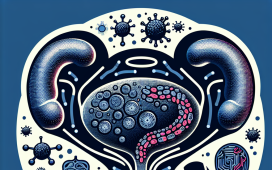Regenerative medicine is a rapidly evolving field that holds tremendous promise for revolutionizing healthcare. By harnessing the power of stem cells and innovative technologies like organ printing, scientists are making groundbreaking strides in tissue and organ regeneration. In this blog post, we will explore the new frontiers in regenerative medicine and the potential they hold for transforming healthcare as we know it.
Stem Cells: The Building Blocks of Regeneration
Stem cells are undifferentiated cells that have the remarkable ability to develop into various types of cells in the body. They have the potential to regenerate and repair damaged tissues and organs, making them a cornerstone of regenerative medicine. Researchers are exploring different sources of stem cells, such as embryonic stem cells, induced pluripotent stem cells (iPSCs), and adult stem cells, to harness their regenerative potential.
Stem cells can be guided to differentiate into specific cell types, such as neurons, heart muscle cells, or pancreatic cells. This opens doors to treating a wide range of conditions, from spinal cord injuries to organ failure. The use of stem cells in regenerative medicine offers hope for patients who have limited treatment options or who require transplantation.
Organ Printing: Building New Organs Layer by Layer
Organ printing, also known as bioprinting, is an innovative technology that aims to construct functional organs using a combination of biomaterials and living cells. It involves the layer-by-layer deposition of cells and bioinks to create complex 3D structures that mimic the architecture and function of human organs. This cutting-edge technique has the potential to address the critical shortage of donor organs and eliminate the need for transplantation waiting lists.
Organ printing relies on the use of bioinks, which are biocompatible materials that can encapsulate living cells while providing structural support. The bioinks can be carefully formulated to mimic the properties of native tissues, allowing cells to thrive and differentiate into the desired cell types. Although the field is still in its early stages, scientists have successfully printed tissues like skin, blood vessels, and even small sections of organs.
Advancing Treatment Options and Personalized Medicine
Regenerative medicine, with its focus on stem cells and organ printing, offers new avenues for treatment options and personalized medicine. By harnessing patients’ own cells, scientists can create tissues and organs that are genetically matched, reducing the risk of rejection. This opens up possibilities for more effective treatments and better patient outcomes.
In addition to organ replacement, regenerative medicine can also improve existing treatments. For example, stem cell therapies have shown promise in promoting tissue regeneration and accelerating healing in conditions like cardiovascular disease, diabetes, and neurodegenerative disorders.
Ethical Considerations and Challenges
With the immense potential of regenerative medicine come ethical considerations and challenges. The use of embryonic stem cells raises ethical debates, and researchers are actively seeking alternative sources, such as iPSCs and adult stem cells, to avoid these controversies. Additionally, there are technical challenges to overcome, such as ensuring the viability and functionality of printed organs, integrating them with the body’s existing systems, and addressing potential long-term effects.
The Future of Regenerative Medicine
As research progresses and technology advances, regenerative medicine is poised to transform healthcare by providing innovative treatment options and addressing critical medical challenges. Stem cells and organ printing have the potential to revolutionize organ transplantation, regenerate damaged tissues, and accelerate the healing process for a range of diseases and conditions. While there are still hurdles to overcome, the ongoing advancements in regenerative medicine fuel optimism for a future where patients can benefit from these exciting therapies.
In conclusion, regenerative medicine is breaking new ground with the use of stem cells and organ printing. The ability to regenerate tissues and create functional organs holds immense promise for improving healthcare outcomes and providing new treatment options. With continued research and innovation, regenerative medicine could shape a future where the limitations of conventional medical treatments are transcended, and patients can benefit from personalized, regenerative therapies.








